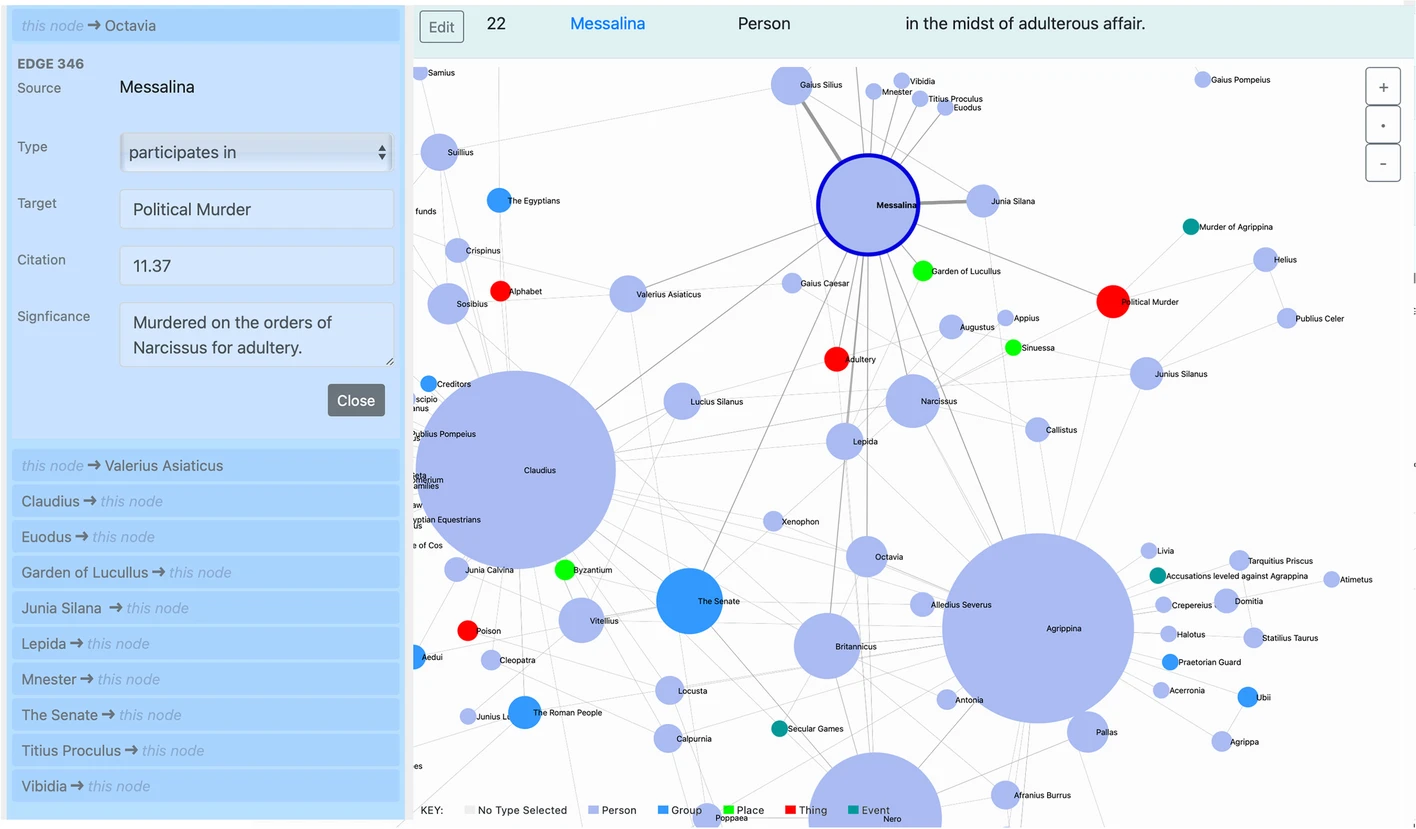
About Digital-History Scholarship of Teaching and learning
Published scholarship on how students learn history through digital methods, and how students learn digital methods in the classroom, has shaped some of my DBHR practices by providing different audiences whose different historical training surfaces different digital-tool-design needs
Design-Based History Research in Digital History Pedagogy
As part of my DBHR practice, I’ve explored the ways that students work with and learn from digital-history tools and methods in the classroom. These digital-pedagogy research lines contribute new knowledge to the discipline of history in two ways.
First, history students are often learning history and digital tools in parallel. Working with digital tools that are designed from the ground up to scaffold their history learning makes for better historical thinking and higher levels of student engagement mean more budding historians entering a pipeline of practicing historians who can put their skills to use both in and outside of the university.
Second, classrooms offer larger-scale pilot testing environments. A digital tool that can support 100 students easily will function far more effectively for small teams of historians than a digital tool that has had limited testing on a smaller scale.
Full Funding & Publication List
Text Based Publications
2021
*Haesol Bae, Kalani Craig, *Fangli Xia, *Yuxin Chen, Cindy E. Hmelo-Silver, "Developing Historical Thinking in Large Lecture Classrooms Through PBL Inquiry Supported with Synergistic Scaffolding", The Interdisciplinary Journal of Problem-Based Learning, Vol. 15 No 2 (2021).
DOI: https://doi.org/10.14434/ijpbl.v15i2.28776.2017
"History in 140 characters: Twitter to Support Reading Comprehension and Argumentation in Digital-Humanities Pedagogy", in Emerging Learning Design Journal 5, pp. 19-28 (June 2017).
https://digitalcommons.montclair.edu/eldj/vol5/iss1/3/."Analog Tools in Digital History Classrooms: An Activity-Theory Case Study of Learning Opportunities in Digital Humanities," in International Journal for the Scholarship of Teaching & Learning 11, No 1 (January 2017).
DOI: https://doi.org/10.20429/ijsotl.2017.110107 .Presentations
Peer-reviewed Conference Proceedings
2018
*Haesol Bae, Kalani Craig, *Fangli Xia, *Yuxin Chen, Cindy Hmelo-Silver, "Developing Historical Thinking in Large Lecture Classrooms Through PBL Inquiry Supported with Synergistic Scaffolding", in Rethinking Learning in the Digital Age: Making the Learning Sciences Count, 13th International Conference of the Learning Sciences (ICLS) 2018, pp. 1438-1440 (June 2018).
2017
Kalani Craig, *Charlie Mahoney, Joshua A. Danish, "Correcting for Presentism in Student Reading of Historical Accounts Through Digital History Methodologies" at the 2017 annual meeting of the American Educational Research Association (San Antonio, TX), April 28, 2017.
Conference Presentations
2017
"Modern Tools, Medieval Plagues: Using Maps and Simulations To Help Students Shift From Modern to Medieval Medical Contexts" in "Out of Bounds: Playing with Space and Movement in Medieval Pedagogy" at the 2017 Annual Conference of the Southeastern Medievalists Association (Charleston, SC), November 16-18, 2017.
"Putting the ‘Activity’ in Active Learning" at the POD Network’s 42nd Annual Conference (Montreal, Canada), October 28, 2017.
"To Gladly Tech(i)e: The activity triangle in Digital pedagogy" in "To "Gladly Teche": Becoming Great Teachers in Graduate School" at the 52nd International Congress on Medieval Studies, Medieval Institute, Western Michigan University (Kalamazoo, MI), May 10-14, 2017.
2015
"Establishing Primary Source Veracity Using Digital Tools" in "Digital Pedagogy for History: Lightning Round" at the 129th annual meeting of the American Historical Association, New York, NY, January 2-6, 2015.
2014
"The Living Syllabus: Linking Classroom Activities, Course Assignments, and Learning Outcomes in Canvas" in "What does active learning look like in Canvas?" at Making it Click: 2014 Indiana Statewide IT Conference, Indiana University–Bloomington, October 8, 2014.
"A Brief Tour of Digital Solutions to Medieval Mediterranean Pedagogical Predicaments" in "Teaching the Mediterranean Middle Ages" at the 128th annual meeting of the American Historical Association, Washington, D.C., January 2–5, 2014.
Examples
Black Death Agent Based Modeling
This agent-based modeling simulation of deaths from bubonic plague rendering takes my digital-tool-building into the classroom and offers a path to digital public history.
The Black Death that broke out in 1348 in medieval Europe and North Africa was caused by a bacteria (Y.Pestis), not a virus. The 1348 outbreak we all learned about in middle school wasn’t the first. It also wasn’t the last. An outbreak in the early 20th century that started in China hit Hawaii in 1899-1900 and San Francisco in 1900-1904. There were 1000 documented cases of plague in the US between 1900 and 2012, and the U.S. sees an average of 10 new cases each year, mostly in the southwest (New Mexico, Colorado and Arizona). In all of these pandemics, medical responses were shaped by social, cultural and economic norms that governed how people fit plague into their world view.
The walls around sixth-century Constantinople are roughly the square mileage of our college town but with different population densities (150K and 500-800K respectively). We used that to make context more salient in an educational intervention in a college-level introductory history course of 94 people organized into 16 tables of 6 students each:
- Students used GoogleMaps or GPS-enabled smartphones to track a day of walking in Bloomington. We then used Google Maps to provide comparisons with Constantinople’s context by asking them to trace 5 walking paths in Constantinople as a group, using the types of people they had encountered in their primary sources as a guide to creating each individual walking path and the intersections between all 5. We overlaid all of the groups’ Constantinople walking paths on each other to mimic the density of their college-town walking paths in order to discuss parallels and differences with their modern college town.
- Students then interacted with an epidemiological simulation that compared population densities in Bloomington and Constantinople but also added social and cultural variables that affected medical response.
- We measured learning gains based on pre-post tests about factors that would affect the rate, speed, and response to spread of plague. Successful students in the post-test understood that Constantinople’s dense urban population and its role as a trading and government center in late Antiquity would result in much faster plague spread, a contrast with student belief that fast modern transportation would lead to faster plague spread even in less urban areas.
